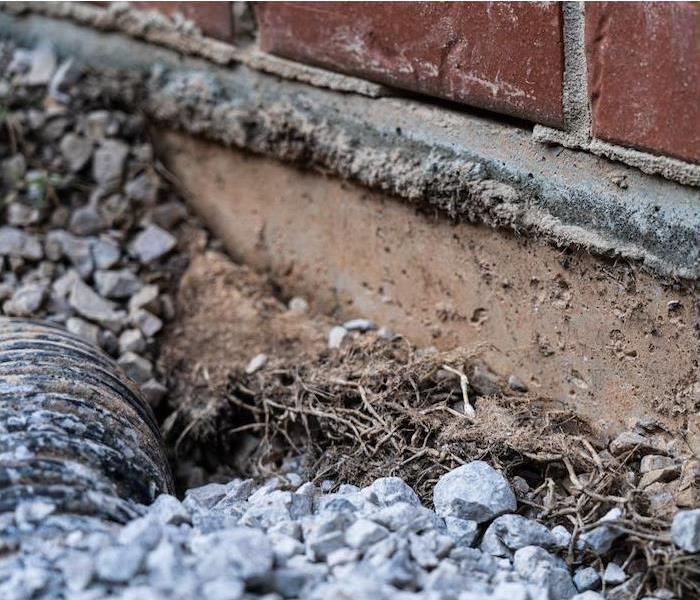If you have water damage in your home, contact us! SERVPRO of Bryan, Effingham, Mcintosh, East Liberty Counties is your local water restoration expert
12/9/2020 (Permalink)
Basement and Foundation Water | SERVPRO® of Bryan, Effingham, Mcintosh, and East Liberty Counties
When you feel water dripping onto your face, you know you have a roof leak. When you see water pooling around your sink, you know you have a pipe problem. But when do you first realize there’s a problem with water getting into your foundation?
Seeing dampness in your basement—if you have one—may be the first step. But often, foundation water problems aren’t discovered or corrected until they’ve done real damage to your house or business.
How Does Water Get Into Your Foundation?
One likely reason: rainwater draining under your house. If your house is built in a low-lying area or depression (the land around is higher than your house), then water can accumulate and seep inside.
Why Does Low-Lying Water Matter?
You can’t actually see the foundation of your house, unless, as we said, you have a full basement. If you just have a tiny crawl space, you may never go there except during a tornado warning. So what does a little water matter?
Quite a lot, actually. Dampness can encourage black mold to grow, making people in your household ill. Termites, which like damp wood, may move in. Plus, water may crack concrete walls and weaken wooden support beams, leading to serious structural damage.
Solutions That Last
It’s not easy to keep water away from your foundation or basement. In fact, some dampness may be a given. But you can prevent accumulation and damage by (1) keeping water away and (2) shunting water out.
To keep water away from your basement or foundation, you want your house to be elevated at least a little—some experts suggest a grade of about an inch per foot, for at least six feet around your house. This way, rainwater and other groundwater drains away from your building, not toward it.
Also, look for faults in construction that might be letting water in. These can include places where below-ground pipes enter your home or business. Cracked concrete can also admit water.
To get rid of unwanted water, you may want to consult a contractor about French drains or drain tile systems. A sump pump can also help remove water from your basement. None of these fixes are quick or easy, but they beat correcting the long-term, expensive damage that can arise over time.
If water damages your home, we’re there for you. Contact us at any hour for assistance.


 24/7 Emergency Service
24/7 Emergency Service
